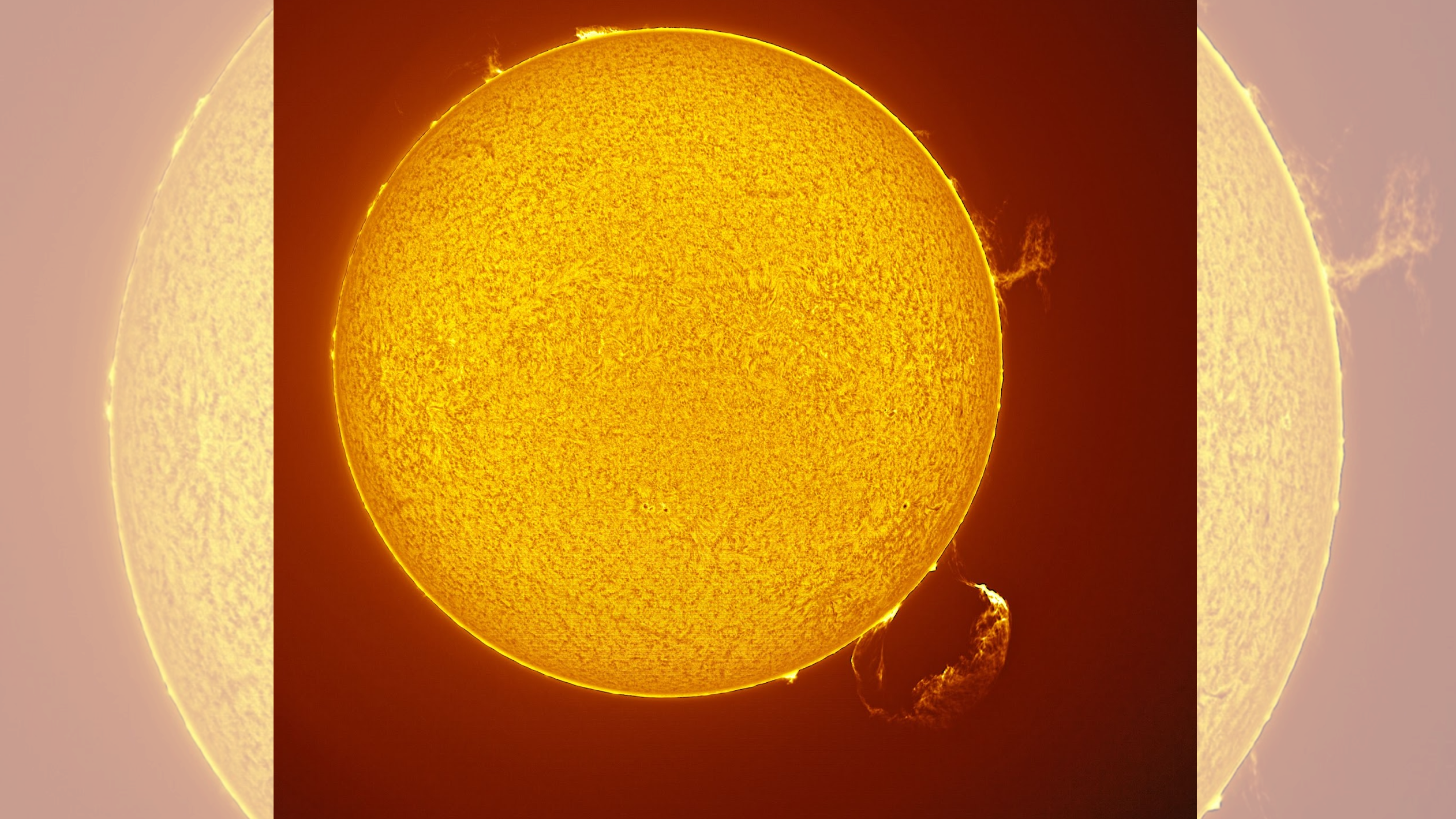Unbelievable Solar Tornado and Eruption Captured in Stunning Image!











2025-08-20T21:05:51Z

What if I told you that on August 20th, astronomers witnessed a breathtaking spectacle occurring on the sun that most of us can only dream of? A giant solar tornado and a massive plasma eruption erupted simultaneously, and a brilliant researcher managed to immortalize this cosmic dance in one stunning photograph!
Meet Maximilian Teodorescu, a dedicated researcher at the Institute of Space Science in Romania. While he was peering into the mysteries of our universe, he spotted something extraordinary—two separate yet connected events unfolding on the sun’s surface. Both phenomena are the result of disturbances in the sun's magnetic field, a force so powerful and elusive that it shapes our solar system in ways we are still trying to understand.
Solar tornadoes, while sounding like something out of a sci-fi novel, are real and incredibly rare. Teodorescu noted that he had never seen a solar tornado alongside an eruptive prominence before. Just to wrap your head around the scale of these events, the solar tornado he captured reaches a towering height of about 130,000 kilometers (or 80,000 miles). To put that into perspective, that’s roughly 10 times the height of Earth stacked one on top of the other!
The swirling mass of plasma, which resembles a tornado on Earth, looks astonishing yet operates under completely different principles. While earthly tornadoes are whipped up by intense winds and can travel across the landscape, solar tornadoes are made of ionized gas (plasma) that remains firmly rooted in place, driven by the sun's magnetic fields.
The eruptive prominence Teodorescu documented was estimated to be around 124,000 miles (200,000 kilometers) wide—almost similar in size to a notorious solar prominence observed previously, known affectionately as “The Beast.” Our sun, in its current solar maximum phase, is a hotbed of activity, and this photo is a reminder of the dynamic forces at play just millions of miles away.
Teodorescu first caught a glimpse of the solar tornado via the Global Oscillation Network Group (GONG) website, an initiative that allows both amateur and professional astronomers to monitor solar activity in almost real time. With the help of his wife, Eliza Teodorescu, he was able to adjust the telescope to capture this magnificent sight. The eruptive prominence burst into view shortly afterward, giving him the chance to document both events in one sensational shot!
NASA explains that prominences are anchored to the sun’s visible surface, or photosphere, and extend into its outer atmosphere, the corona. An eruptive prominence occurs when the magnetic field becomes unstable, releasing plasma into space. In many cases, this plasma can trigger a coronal mass ejection (CME), resulting in solar storms that can disrupt satellites, and even create stunning auroras when they collide with Earth's magnetic field. However, Teodorescu reassured us that the CME he observed is not headed toward our planet, meaning we are safe from disruptions and won't be treated to a light show of northern lights this time.
Nevertheless, thanks to other solar activities, skywatchers at high latitudes may still catch glimpses of auroras tonight! The sun is currently in the most vigorous phase of its 11-year solar cycle, making it a prime time for solar observation. Teodorescu advised that even amateur astronomers can witness the sun’s dynamic nature through small telescopes equipped with solar filters.
“It's the most dynamic thing you can actually see as both an amateur and a professional in the sky,” he declared. The universe is full of unexpected wonders, and it’s moments like this that remind us of the endless mysteries waiting to be explored!
 Elena Petrova
Elena Petrova
Source of the news: Live Science